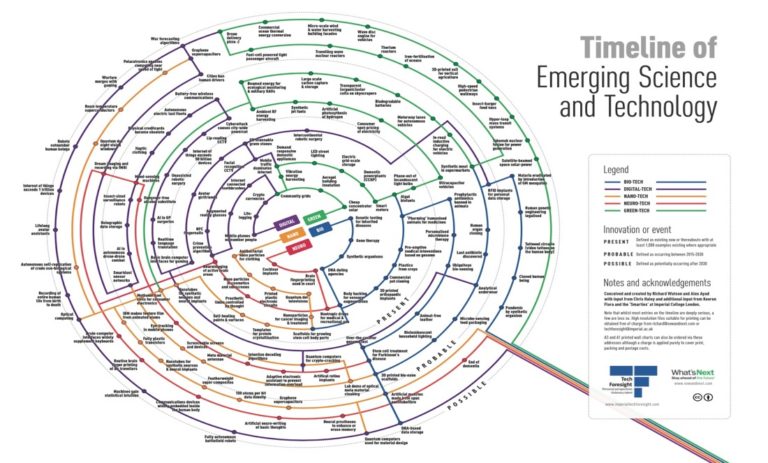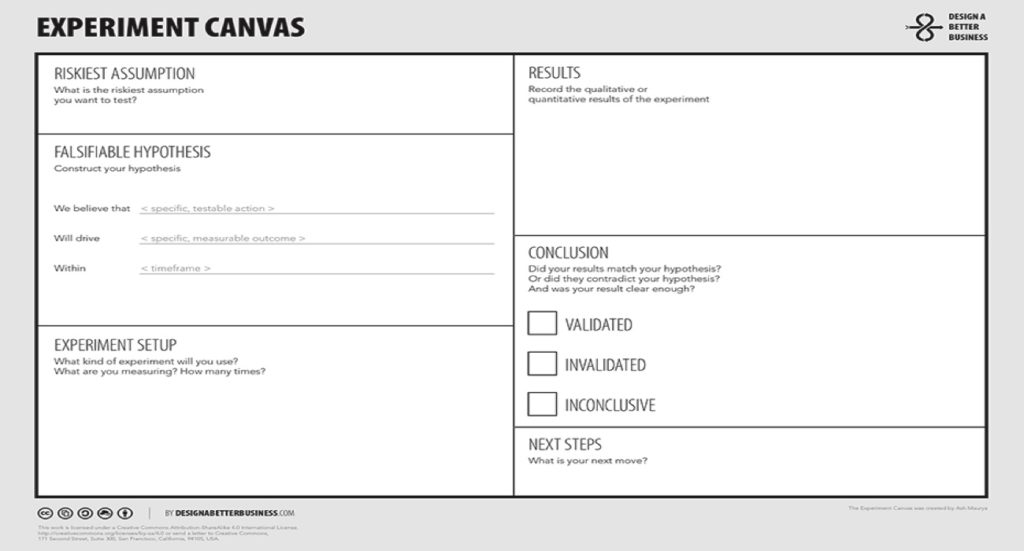
Timeline of Emerging Science and Technology
Timeline of Emerging Science and Technology BOXStrategy ToolkitCreativity

BOX
Strategy Toolbox
Temps suggéré
30 minutes
Niveau de Difficulté
Expert
Matériels Nécessaires
Participants
Once you’ve found your riskiest assumptions you’ll need a way to figure out how best to test and measure them in a quantitative way. The experiment canvas, created by Ash Maurya, provides a straightforward way to break down your assumptions into measurable, observable, experiments.
The purpose of the experiment canvas is to design the right experiment at the right time, facilitating a team to have the right conversation. With the experiment canvas, it is easy to design a well-defined experiment: starting with identifying the current Riskiest Assumption, then specifying a clear, falsifiable hypothesis and experiment setup. After running the experiment, check the results and plan your next steps.
Your hypothesis is a statement you believe to be true about your riskiest assumption. Write it down before you run the experiment. It is too easy to change the conditions afterward to make the data fit, and this robs you of valuable insight.
Quantify your hypothesis. How many customers will do it? How many times? In what timeframe? It’s okay to use a bandwidth for this, as long as you specify it upfront. The metrics you define need to be actionable (i.e., they need to directly relate to the hypothesis) and, accessible (i.e., you need to be able to see the results).
Link the numbers back to the assumption you are testing. Why does having 10 positive results validate your assumption? Specify any qualitative outcomes and variables. What different answers you are expecting? How will you cluster them?
Armed with this hypothesis you’re ready to start your experiment. Track the data immediately and write everything down, so that later you can check if you interpreted the results correctly.
Use the hypothesis formula: « We believe (specific testable action) will drive (specific measurable outcome) within (timeframe) »
Source : Design a Better Business

Timeline of Emerging Science and Technology BOXStrategy ToolkitCreativity

Invented in Japan by Yasuo Matsumura, the Lotus Blossom technique adds focus and power to classic brainstorming. Once mastered, the technique helps you create more and higher quality ideas for products and services, find innovative ways of improving your business, and helps you solve a variety of problems you frequently encounter.

Business Model Innovation & Proposition de Valeur Centrée Client
